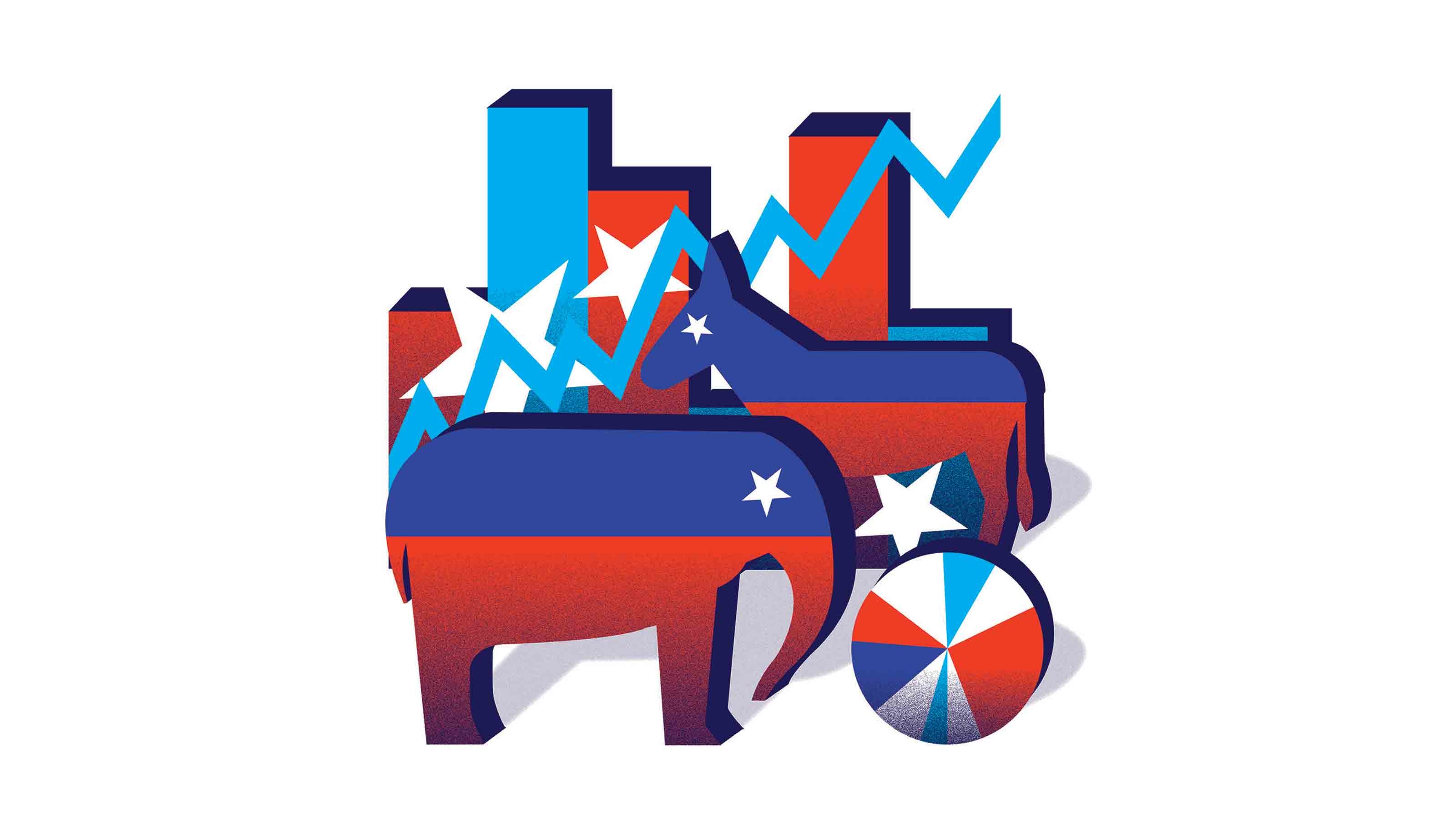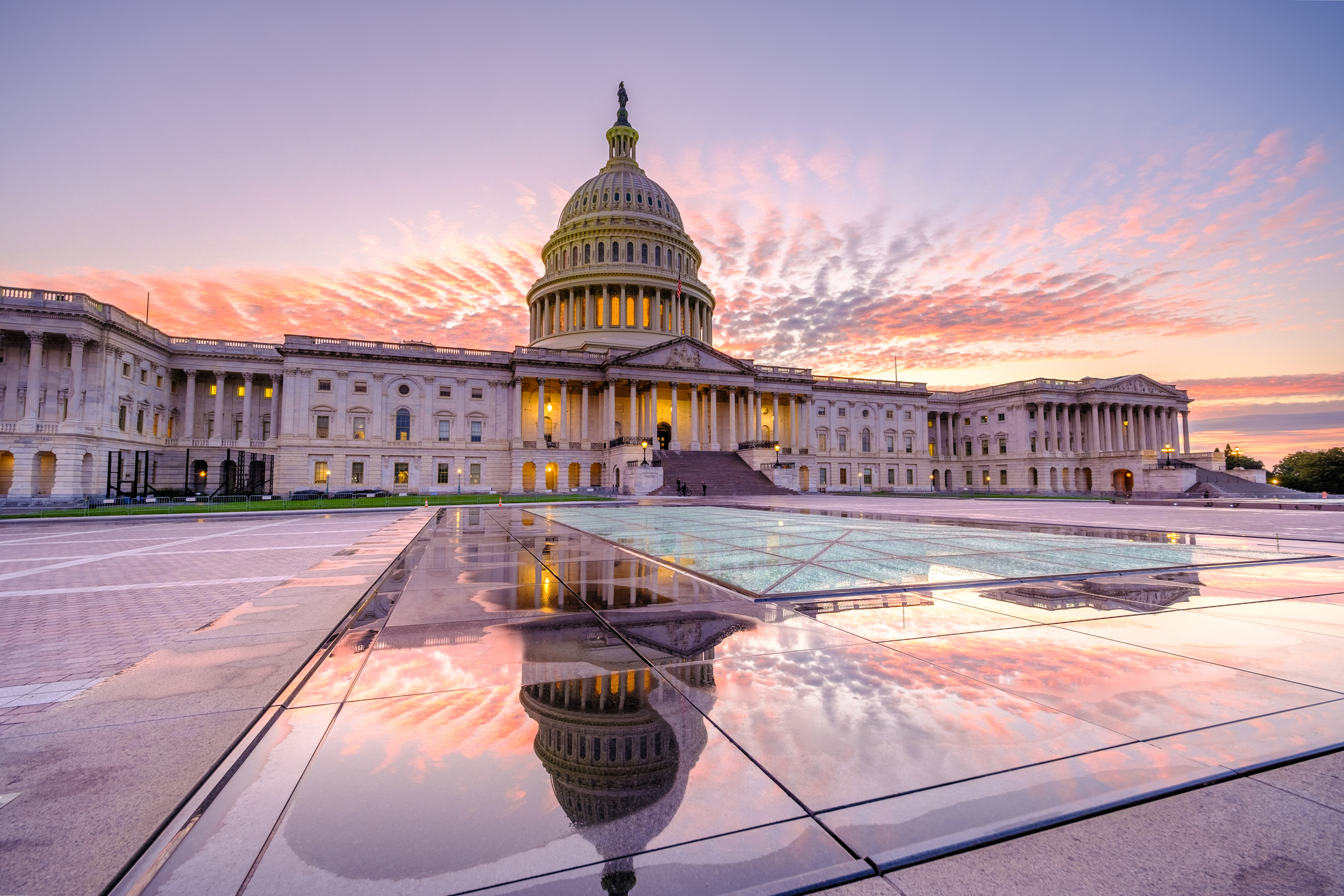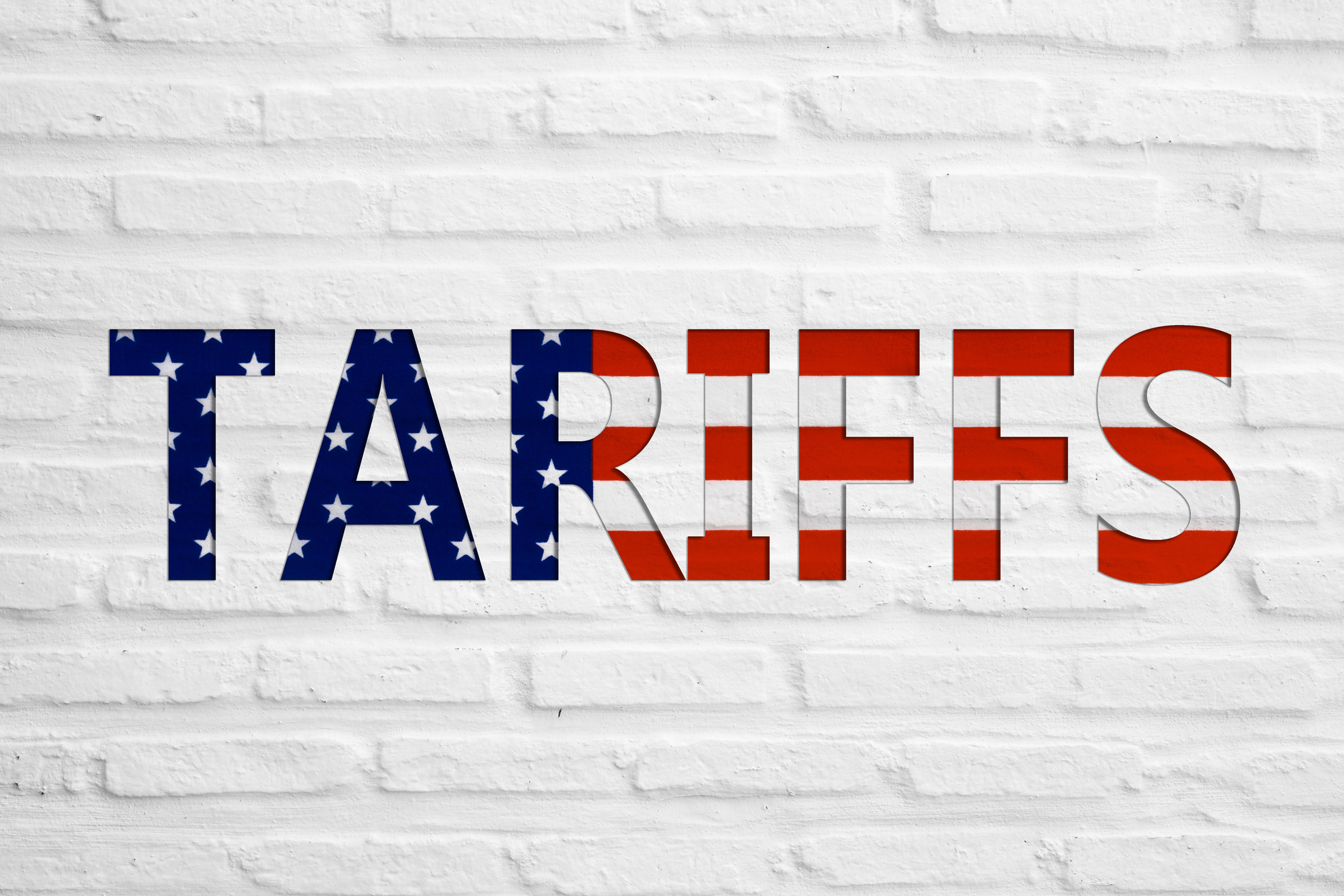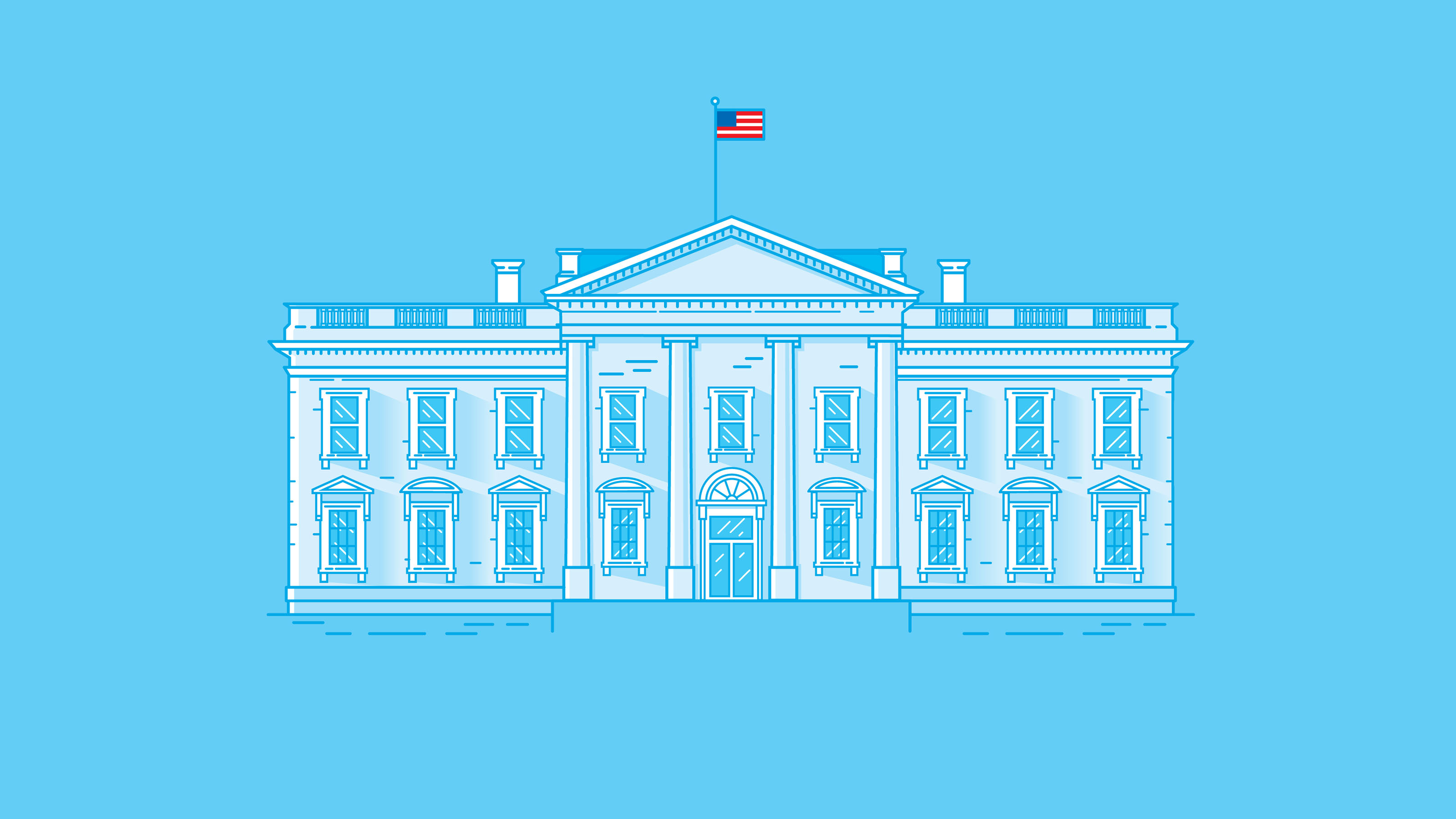2020 Election: The Stock Market Reaction
This year, especially, the election isn’t the only market driver.

As we head into election day, investors are understandably wondering—and even anxious—about how the U.S. presidential election will affect the financial markets. It’s important to remember that this year, especially, the election isn’t the only market driver, or even the main one. “Clearly there’s going to be a market impact from this election, but some of what impacts the market will be decided by a slew of other things beyond who’s at the top of the ticket,” says Ed Mills, a Washington policy analyst with investment firm Raymond James. “Where are we with the virus? Where are we on the economy?”
As the answers to those questions unfold, investors can at least look to history for some clues about the stock market. The four-year presidential market cycle is well known on Wall Street. During a presidential term, markets do best in the third and fourth years—election year and the year preceding it. Politicians tackle unpleasant tasks—a rate or tax hike, say—early on but prime the pump as the election approaches.
Donald Trump’s term has been anything but average. Trump years one and three (2017 and 2019) far outstripped the average price gain in the S&P 500 index for comparable years, going back to Franklin Roosevelt’s term beginning in 1941 through Barack Obama’s presidency, ending in 2016. Trump years two and four have underperformed the average. The question is whether the market’s recent upward trajectory will continue long enough to bring this election year up to average or beyond.

Sign up for Kiplinger’s Free E-Newsletters
Profit and prosper with the best of expert advice on investing, taxes, retirement, personal finance and more - straight to your e-mail.
Profit and prosper with the best of expert advice - straight to your e-mail.
Beware of conventional wisdom that says Wall Street favors business-friendly Republicans at the helm. Since 1928, annualized total returns for the S&P 500 have averaged 13.3% under Democrats, compared with 7.7% under Republicans, according to InvesTech Research. For a hint about who will win the election, keep a close eye on market indexes. If they’re up in the three months preceding the election, the incumbent wins 87% of the time.
Whoever wins will fill top positions at the Securities and Exchange Commission and the Federal Reserve, important decisions for financial markets. As for the candidates’ policies, both party platforms remain sketchy on details in parts. A win by either side could mean different things for different portions of the market. Here are the issues that are likely to have the biggest impact.
Corporate taxes. In 2017, Trump (and a Republican-controlled Congress) cut corporate tax rates from 35% to 21%, spurring profits. If he wins a second term, corporate tax rates will stay the same and S&P 500 earnings could jump 30% in 2021 from 2020, say Credit Suisse analysts.
Biden would seek to raise the corporate tax rate to 28%, which could reduce earnings per share in the S&P 500 by 8% to 12% in 2021, according to estimates from Northern Trust. “Any tax increase is a negative for the markets, but it’s part of a complicated ecosystem,” says Northern Trust’s chief investment officer, Katie Nixon. Biden might spur growth in certain sectors by spending the extra tax dollars on climate, health care and infrastructure initiatives, among others, which could offset the one-time hit of a higher corporate tax rate. And a Democratic administration would be more robust in fiscal stimulus spending to support the economy, says Mills at Raymond James.
Even so, the impact of any tax hike would vary across sectors and even within them. The biggest winners of Trump’s tax cut in 2017—financials, consumer-oriented stocks and shares of communication services firms, which surged as earnings expectations rose—stand to get dinged if tax rates rise. At the other end, utilities and real estate firms benefited less from Trump’s cuts, which bodes well for these sectors should Biden get his increase to 28%.
Biden has other tax changes on his wish list that could disproportionately hit information technology and health care stocks, says Ron Graziano, head of global accounting and tax research at Credit Suisse. Those changes including a doubling of tax rates, from 10.5% to 21%, that multinational companies pay on earnings from intellectual property held or used by foreign subsidiaries.
Altogether, Biden’s tax proposals could weigh heavily on the stock market, given the hit to corporate profits. Firms with strong balance sheets that generate steady cash and profits “have a proven ability to manage, absorb and sidestep potential negative tax issues,” says Graziano. High-quality companies such as Home Depot, JPMorgan Chase and Nike are examples. But Biden may have to wait on tax hikes. “With a soft economy, a big initiative on higher taxes is not how I anticipate things starting off,” says Jonathan Golub, chief stock strategist at Credit Suisse.
Trade with China. Everyone wants to level the playing field with China, safeguarding the intellectual property of U.S. companies and boosting competition between nations on manufacturing and trade. Trump has taken an us-against-them approach, levying tariffs, but Biden would likely use diplomatic and political pressure to take on China by forming a united front with Europe and Japan.
No matter the approach, the cold war is here to stay. “China wants to dominate global technology and we don’t want them to,” says Nixon. “There’s no answer to that dilemma.” Navigate the divide by making sure your portfolio has exposure to both China and U.S. stocks.
Infrastructure. Both sides agree that infrastructure spending is needed, and the passage of any plan would be a big win for industrials and materials companies, including Caterpillar, Vulcan Materials and US Concrete.
But the parties disagree on how to pay for it. Trump’s 2018 plan called for mostly private-sector funding. (He has a $1 trillion plan in the works, but funding details are still unclear.) Biden’s $2 trillion plan would be federally funded, in part by higher corporate taxes.
Although repairing crumbling roads and bridges and investing in 5G wireless and rural broadband are on the to-do list of both sides, some of Biden’s initiatives—increased mass transit and a high-speed rail network—tilt toward lowering our reliance on fossil fuels. Trump’s first-term initiatives, on the other hand, have encouraged fossil-fuel production.
The biggest hurdle for infrastructure initiatives is timing, given the struggling economy. The impact on growth tends to be watered down if a program takes years to play out, says Wells Fargo Investment Institute market strategist Gary Schlossberg. Lawmakers may decide to focus on initiatives that produce instant economic results.
Financials. A Trump win would mean a rally in financial stocks. His campaign website catalogs dozens of regulations eased or removed across sectors, including financials, since taking office. Some moves weakened large parts of the Dodd-Frank Wall Street reform law, enacted after the 2008 financial crisis. Trump, for instance, with bipartisan support, raised the asset threshold for banks that are exempt from some federal oversight—such as stress tests that can help determine whether a bank has the capital to withstand an economic or financial crisis—from $50 billion to $250 billion.
A Biden presidency would shore up the Dodd-Frank regulations again. But re-regulation isn’t new regulation. Financial services firms have the architecture to adapt. They’re “not starting from a dead stop,” says Nixon.
Health care. Biden wants to expand coverage of the Affordable Care Act; Trump wants to abolish the health care law. Both positions create uncertainty that could weigh on health care stock prices.
One area of agreement: lowering drug prices. Trump proposed a rule last year to allow Americans to import some prescription drugs at lower prices from Canada. Biden supports lowering drug prices to match those of other nations, among other proposals.
Innovative drug and medical device stocks are less vulnerable to battles over the ACA and drug prices. You’ll find examples in exchange-traded funds such as iShares US Medical Devices and SPDR S&P Biotech. Hospitals, big winners under the ACA, face the most risk with any uncertainty about the health care law.
Energy and climate. If reelected, Trump would continue to strip away energy regulations and encourage fossil-fuel production. That would lift the energy industry, hobbled this year after a dispute between Saudi Arabia and Russia over limiting oil supply coincided with a pandemic-related fall in demand.
A Biden administration would focus on clean energy and lower emissions standards, among other things, in the name of combating climate change. His $2 trillion clean-energy and infrastructure plan hopes to achieve an emissions-free power sector by 2035 and invest in game-changing clean-energy technologies. That bodes well for green investing strategies, particularly in renewable energy. Although our motives weren’t political, we just added Invesco WilderHill Clean Energy (symbol PBW) to the Kiplinger ETF 20, the list of our favorite exchange-traded funds (see Find the Best ETFs for Your Goals).
Sandra Block, Lisa Gerstner, Nellie S. Huang and Anne Smith contributed to this story.
Get Kiplinger Today newsletter — free
Profit and prosper with the best of Kiplinger's advice on investing, taxes, retirement, personal finance and much more. Delivered daily. Enter your email in the box and click Sign Me Up.
-
 The AI Doctor Coming to Read Your Test Results
The AI Doctor Coming to Read Your Test ResultsThe Kiplinger Letter There’s big opportunity for AI tools that analyze CAT scans, MRIs and other medical images. But there are also big challenges that human clinicians and tech companies will have to overcome.
By John Miley Published
-
 The Best Places for LGBTQ People to Retire Abroad
The Best Places for LGBTQ People to Retire AbroadLGBTQ people can safely retire abroad, but they must know a country’s laws and level of support — going beyond the usual retirement considerations.
By Drew Limsky Published
-
 Are You Ready to Pay More Taxes to Save Social Security?
Are You Ready to Pay More Taxes to Save Social Security?Social Security Across party lines, many believe saving Social Security trumps other financial considerations.
By Kelley R. Taylor Published
-
 ‘Are You Better Off Than You Were 71 Days Ago?’ Cory Booker Historic Senate Speech Highlights Tax Debate
‘Are You Better Off Than You Were 71 Days Ago?’ Cory Booker Historic Senate Speech Highlights Tax DebateTax Policy A speech protesting Trump’s policies, including tax plans, breaks U.S. Senate records.
By Kelley R. Taylor Last updated
-
 What’s Happening With Trump Tariffs? Updates for April
What’s Happening With Trump Tariffs? Updates for AprilTariffs Donald Trump continues to use tariffs as a central tool of his trade policy. Here’s where tariffs stand now.
By Kelley R. Taylor Last updated
-
 Taxpayer Revolt? Why More People Are Avoiding Filing Taxes This Year
Taxpayer Revolt? Why More People Are Avoiding Filing Taxes This YearTax Season It may be tempting to skip filing due to the overwhelmed IRS, but doing so could have financial and legal consequences.
By Kelley R. Taylor Last updated
-
 No New IRS Agents? What Trump’s Federal Hiring Freeze, Firings Mean for Your Taxes
No New IRS Agents? What Trump’s Federal Hiring Freeze, Firings Mean for Your TaxesIRS Will an executive order and firing IRS workers reshape the federal tax agency and impact how long it takes to get your tax refund?
By Kelley R. Taylor Last updated
-
 Can Trump Tariffs Make Childcare More Affordable?
Can Trump Tariffs Make Childcare More Affordable?Tariffs President Trump has suggested that tariffs can address the childcare crisis, but economists are doubtful.
By Gabriella Cruz-Martínez Published
-
 Best Banks for High-Net-Worth Clients
Best Banks for High-Net-Worth Clientswealth management These banks welcome customers who keep high balances in deposit and investment accounts, showering them with fee breaks and access to financial-planning services.
By Lisa Gerstner Last updated
-
 White House Probes Tracking Tech That Monitors Workers’ Productivity: Kiplinger Economic Forecasts
White House Probes Tracking Tech That Monitors Workers’ Productivity: Kiplinger Economic ForecastsEconomic Forecasts White House probes tracking tech that monitors workers’ productivity: Kiplinger Economic Forecasts
By Matthew Housiaux Published